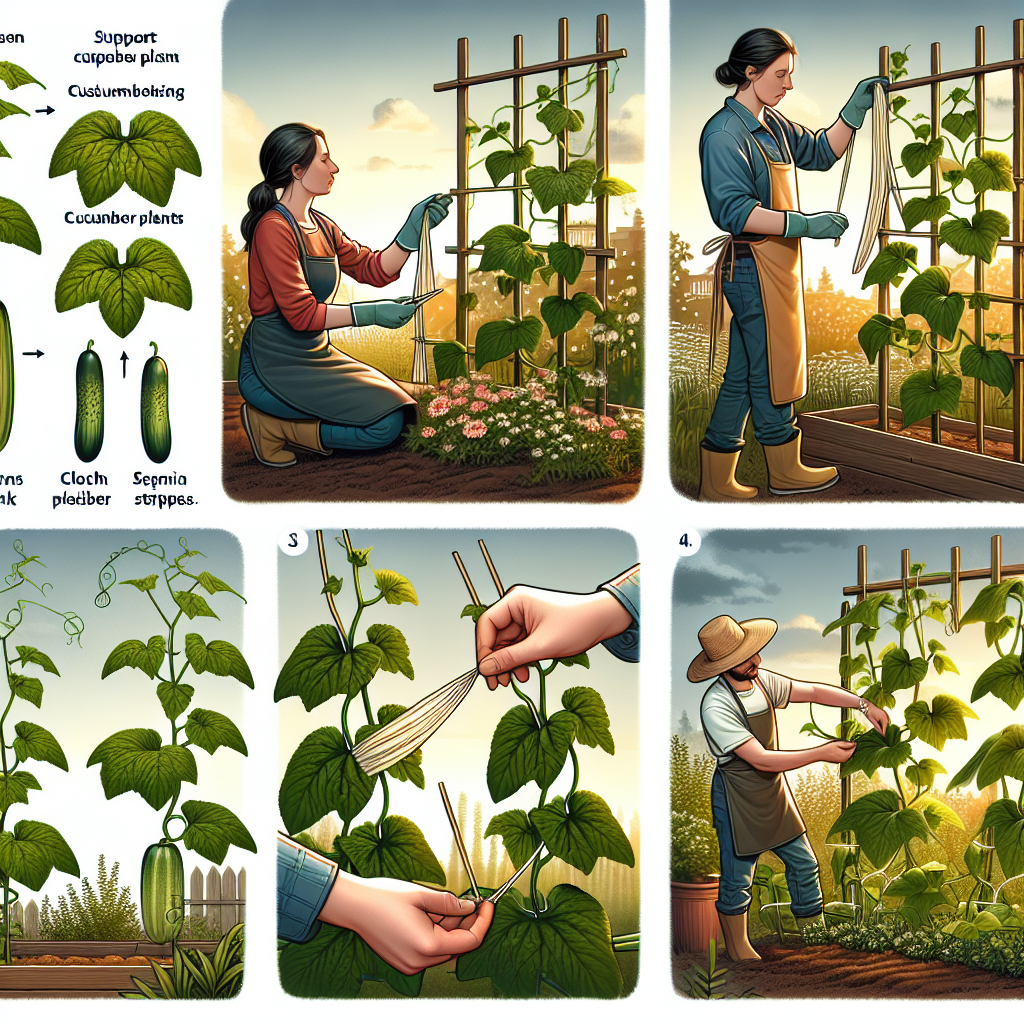
How to hold up cucumber plants
How to Support Your Cucumber Plants for a Thriving Garden
Cucumbers are one of the most rewarding plants to grow in your backyard garden. They are refreshing, versatile, and perfect for salads, sandwiches, and snacks. However, their climbing nature may lead to a tangled mess on the ground if not appropriately supported. In this article, we’ll discuss effective methods on how to hold up cucumber plants to ensure they grow healthily and produce an abundant harvest.
The Importance of Supporting Cucumber Plants
Supporting your cucumber plants has several benefits:
- Improved Air Circulation: Supporting cucumber plants encourages better airflow around the leaves and fruit, reducing the risk of fungal diseases.
- Enhanced Sunlight Exposure: Elevating plants allows for more sunlight to reach the leaves, which is essential for photosynthesis and fruit development.
- Minimized Pests: Elevated plants are less likely to attract pests that thrive on damp, shaded ground.
- Easier Harvesting: Supporting your cucumbers makes it simpler to spot ripe fruits and reduces the risk of damaging them when harvesting.
- Space Efficiency: Climbing varieties grow upwards, making them an excellent choice for small gardens or containers.
Types of Cucumber Support Structures
There are various methods available for supporting cucumbers, depending on your garden space and personal preference. Here are some popular options:
1. Trellises
Trellises are one of the most common methods for supporting cucumber plants. They are typically made of wood, metal, or wire, and they allow cucumbers to grow vertically, saving ground space.
- Wooden Trellis: Construct a frame using wooden stakes and lattice for a rustic look.
- Metal Trellis: Use durable wire mesh or metal fencing that can withstand outdoor conditions.
- Netting Trellis: String heavy-duty gardening netting between poles for a lightweight option.
2. Fences
If you have an existing fence in your garden, it can serve as a support structure for your cucumber plants. Simply plant your seeds or seedlings at the base of the fence, and guide them to climb up.
3. Cages
Plant cages are another simple solution for supporting cucumber plants. They can be purchased or homemade from wire fencing. These cages provide ample support and protection as the plants grow.
4. Arches and Arbors
For an aesthetically pleasing garden, consider installing an arch or arbor. These structures not only support cucumbers but also add a decorative element. Cucumbers can be intertwined around the arch for a whimsical display.
5. Stakes
If you are growing bush cucumbers, individual stakes could provide the necessary support. Insert a stake near each plant and tie the stems loosely with soft garden twine.
When to Start Supporting Cucumber Plants
It's essential to support your cucumber plants at the right time to ensure they grow well. Support structures should be in place once the plants are about 6 inches tall. This allows them to naturally start climbing their support and reduces the likelihood of damaging delicate stems.
How to Properly Secure Cucumber Plants
Once you have chosen the right support structure, it's crucial to tie the cucumber vines carefully to prevent damage. Here are steps on how to secure them:
- Choose the Right Twine: Use soft plant ties, garden twine, or even fabric strips to secure cucumber vines. Avoid materials that could cut into the stems.
- Loosely Tie the Vines: Make a loose knot around the stem to allow for growth without constricting the plant.
- Guide the Vines: As the plants grow, gently guide them upward towards the support structure, tying them as needed.
- Check Frequently: Regularly inspect your cucumber plants to ensure they are properly secured and adjust as necessary.
Tips for Growing Healthy Cucumber Plants
Aside from supporting your plants, several other factors contribute to the success of your cucumber garden. Consider these tips for optimal growth:
- Soil Quality: Cucumbers prefer rich, well-draining soil with a pH between 6.0 and 7.0. Adding compost or well-rotted manure can enhance soil fertility.
- Watering: Regular and consistent watering is crucial. Aim to keep the soil moisture level even, especially during hot weather.
- Sunlight: Plant cucumbers in a location that receives full sun for at least 6-8 hours a day to promote healthy growth.
- Fertilization: Consider using a balanced fertilizer every 4-6 weeks to boost plant growth. Follow the manufacturer’s recommendations for application rates.
Managing Pests and Diseases
Even with proper support and care, cucumber plants can still fall prey to pests and diseases. Here are some common ones to watch out for:
- Aphids: These small, soft-bodied insects suck the sap from cucumber plants. Use insecticidal soap or neem oil to control infestations.
- Powdery Mildew: This fungal disease appears as a white powdery coating on leaves. Prevent it by ensuring good air circulation and avoiding excessive moisture.
- Cucumber Beetles: These pests can damage cucumber plants and transmit diseases. Handpicking them off the plants or using row covers can help in control.
Conclusion: The Key to a Bountiful Cucumber Harvest
In conclusion, knowing how to hold up cucumber plants is essential for maximizing their growth potential. By implementing the right support structures early on and following best practices for care, you will enjoy a hidden bounty of fresh, crisp cucumbers right from your garden. Remember to monitor your plants regularly, and don’t hesitate to make adjustments as needed. Happy gardening!
By Guest, Published on October 1st, 2024